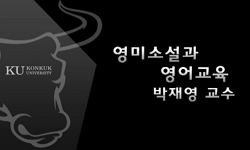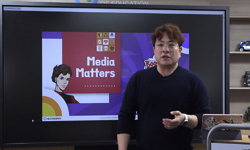이 연구의 목적은 WABC (Wiig Assessment of Basic Concepts) 개념어휘 평가도구를 이용하여 한국아동의 영어기본개념 어휘수준을 평가하고 영어가 모국어인 아동의 어휘습득 수준에 근거하여 분석하...
http://chineseinput.net/에서 pinyin(병음)방식으로 중국어를 변환할 수 있습니다.
변환된 중국어를 복사하여 사용하시면 됩니다.
- 中文 을 입력하시려면 zhongwen을 입력하시고 space를누르시면됩니다.
- 北京 을 입력하시려면 beijing을 입력하시고 space를 누르시면 됩니다.
https://www.riss.kr/link?id=A77024160
- 저자
- 발행기관
- 학술지명
- 권호사항
-
발행연도
2009
-
작성언어
Korean
- 주제어
-
등재정보
KCI등재후보
-
자료형태
학술저널
- 발행기관 URL
-
수록면
281-305(25쪽)
-
KCI 피인용횟수
0
- 제공처
-
0
상세조회 -
0
다운로드
부가정보
국문 초록 (Abstract)
WABC는 1단계, 2단계 검사지를 포함하고 있으며 학습자의 이해능력과 표현능력을 모두 평가하도록 고안되어 있다. 7:5세부터 13:9세까지의 연령범위에 있는 20명의 아동이 연구대상으로 선정되었다. 이 아동들을 각각 7:5세부터 9:6세, 9:7세부터 11:3세, 11:4세부터 13:9세까지의 세 집단으로 나누었다. 설문지를 통해 아동의 개인별 영어노출시간 수를 검사하였다. 아동의 연령과 영어노출 시간수를 변인으로 하여 개념 어휘 평가 점수를 분석하였다.
SPSS 12.0을 사용하여 다음과 같은 통계 결과를 얻었다: 첫째, WABC 1단계 검사에서 11:4세부터 13:9세까지의 한국아동들은 영어가 모국어인 아동 3:0세부터 3:11세까지의 아동 점수와 근사값을 보였다. 2단계 검사에서는 11:4세부터 13:9세까지의 한국아동 점수와 영어를 모국어로 하는 5:00세부터 5:11세까지의 아동점수가 유사하였다. 둘째, 제 1단계 검사에서 세 집단의 평균값은 각각 25.83, 27.86, 52.86이었다. 제 2단계 검사에서 평균값은 각각 19.00, 21.14, 43.86의 점수를 보였다. 연령대가 높은 집단이 더 높은 평균값을 보였다. 셋째, 제 2단계 검사의 이해력 검사를 뺀 나머지 검사, 즉 1단계의 이해력과 표현력 검사와 2단계의 표현력 검사에서 영어노출 시간 수에 따라 집단 간의 유의미한 차이(p<.05)가 나타났다. 이는 영어노출 시간 수와 습득이 상관관계가 있음을 보여준 것이다.
이 연구의 목적은 WABC (Wiig Assessment of Basic Concepts) 개념어휘 평가도구를 이용하여 한국아동의 영어기본개념 어휘수준을 평가하고 영어가 모국어인 아동의 어휘습득 수준에 근거하여 분석하는 데 있다. 나아가 아동의 생활연령에 따라 개념 어휘 습득이 의미있는 수준으로 학습되고 있는지 평가하고자 한다.
WABC는 1단계, 2단계 검사지를 포함하고 있으며 학습자의 이해능력과 표현능력을 모두 평가하도록 고안되어 있다. 7:5세부터 13:9세까지의 연령범위에 있는 20명의 아동이 연구대상으로 선정되었다. 이 아동들을 각각 7:5세부터 9:6세, 9:7세부터 11:3세, 11:4세부터 13:9세까지의 세 집단으로 나누었다. 설문지를 통해 아동의 개인별 영어노출시간 수를 검사하였다. 아동의 연령과 영어노출 시간수를 변인으로 하여 개념 어휘 평가 점수를 분석하였다.
SPSS 12.0을 사용하여 다음과 같은 통계 결과를 얻었다: 첫째, WABC 1단계 검사에서 11:4세부터 13:9세까지의 한국아동들은 영어가 모국어인 아동 3:0세부터 3:11세까지의 아동 점수와 근사값을 보였다. 2단계 검사에서는 11:4세부터 13:9세까지의 한국아동 점수와 영어를 모국어로 하는 5:00세부터 5:11세까지의 아동점수가 유사하였다. 둘째, 제 1단계 검사에서 세 집단의 평균값은 각각 25.83, 27.86, 52.86이었다. 제 2단계 검사에서 평균값은 각각 19.00, 21.14, 43.86의 점수를 보였다. 연령대가 높은 집단이 더 높은 평균값을 보였다. 셋째, 제 2단계 검사의 이해력 검사를 뺀 나머지 검사, 즉 1단계의 이해력과 표현력 검사와 2단계의 표현력 검사에서 영어노출 시간 수에 따라 집단 간의 유의미한 차이(p<.05)가 나타났다. 이는 영어노출 시간 수와 습득이 상관관계가 있음을 보여준 것이다.
다국어 초록 (Multilingual Abstract)
Its results follow: First, learners aged from 11:4 to 13:9 score very close to the acquisition level of American children aged from 3:0 to 3:11 respectively in the WABC Level 1 test. In the Level 2 test, the acquisition of the group aged from 11:4 to 13: 9 is similar to that of English children aged from 5:00 to 5:11. Second, the mean scores of the WABC test that the groups achieve are 25.83, 27.86, and 52.86, respectively, in the Level 1 test. In the Level 2 test, their mean scores are 19.00, 21.14, and 43.86 respectively. It is found that older students score higher. Third, except for the receptive of the Level 2 test, the other evaluations of receptive and expressive in the Level 1 test and the expressive in the Level 2 test show significant differences (p<.05) between the groups divided by English exposure time. This paper shows that the more students are exposed to English, the better acquisition occurs.
The purpose of this paper is to assess Korean English learners' acquisition of basic English concept words through Wiig Assessment of Basic Concepts (WABC) and contrast it with that of American children, evaluating if acquisition is meaningfully achie...
The purpose of this paper is to assess Korean English learners' acquisition of basic English concept words through Wiig Assessment of Basic Concepts (WABC) and contrast it with that of American children, evaluating if acquisition is meaningfully achieved among Korean learners grouped according to chronological age. The WABC includes two-age level tests for evaluating the receptive and expressive ability to recognize basic concepts. Twenty learners are chosen for this research, from 7:5 to 13:9. They are divided into three groups, aged from 7:5 to 9:6, 9:7 to 11:3, and 11:4 to 13:9. The total hours of students' English exposure are also examined. Based on these two criteria, age difference and English exposure time difference, the basic English concept word acquisition is evaluated, with subjects interviewed individually. SPSS 12.0 is used for statistical analysis.
Its results follow: First, learners aged from 11:4 to 13:9 score very close to the acquisition level of American children aged from 3:0 to 3:11 respectively in the WABC Level 1 test. In the Level 2 test, the acquisition of the group aged from 11:4 to 13: 9 is similar to that of English children aged from 5:00 to 5:11. Second, the mean scores of the WABC test that the groups achieve are 25.83, 27.86, and 52.86, respectively, in the Level 1 test. In the Level 2 test, their mean scores are 19.00, 21.14, and 43.86 respectively. It is found that older students score higher. Third, except for the receptive of the Level 2 test, the other evaluations of receptive and expressive in the Level 1 test and the expressive in the Level 2 test show significant differences (p<.05) between the groups divided by English exposure time. This paper shows that the more students are exposed to English, the better acquisition occurs.
목차 (Table of Contents)
- 〈국문초록〉
- 1. 서론
- 2. 이론적 배경
- 3. 연구방법
- 4. 요약 및 결론
- 〈국문초록〉
- 1. 서론
- 2. 이론적 배경
- 3. 연구방법
- 4. 요약 및 결론
- 참고문헌
- Abstract
참고문헌 (Reference)
1 박은혜, "유아 조기 영어교육의 실태와 인식에 관한 연구" 성결대학교 2001
2 이성은, "아동을 위한 총체적 언어교육: 실체와 매체로서의 언어적 관점" 이화여자대학교 출판부 2005
3 Wiig, E. H., "Wiig Assessment of Basic Concepts" Super Duper Publications 2004
4 Bachman, L. F., "What does language testing have to offer?" 25 : 671-704, 1991
5 Canale, M., "Theoretical bases of communicative approaches to second-language teaching and testing" 1 (1): 1-47, 1980
6 Brian, C. R., "The relative potency of color and form perception at various ages" 12 : 197-213, 1929
7 Bachman, L. F., "The construct validation of the FSI oral interview" 3 (3): 67-86, 1981
8 Ausubel, D., "School Learning; an introduction to educational psychology" Holt, Rinehart and Winston 1969
9 Brown, H.D., "Principles of Language Learning And Teaching" Pearson Education 2000
10 Melkman, R., "Preference for color and form in preschoolers as related to color and form differentiation" 47 : 1045-1050, 1976
1 박은혜, "유아 조기 영어교육의 실태와 인식에 관한 연구" 성결대학교 2001
2 이성은, "아동을 위한 총체적 언어교육: 실체와 매체로서의 언어적 관점" 이화여자대학교 출판부 2005
3 Wiig, E. H., "Wiig Assessment of Basic Concepts" Super Duper Publications 2004
4 Bachman, L. F., "What does language testing have to offer?" 25 : 671-704, 1991
5 Canale, M., "Theoretical bases of communicative approaches to second-language teaching and testing" 1 (1): 1-47, 1980
6 Brian, C. R., "The relative potency of color and form perception at various ages" 12 : 197-213, 1929
7 Bachman, L. F., "The construct validation of the FSI oral interview" 3 (3): 67-86, 1981
8 Ausubel, D., "School Learning; an introduction to educational psychology" Holt, Rinehart and Winston 1969
9 Brown, H.D., "Principles of Language Learning And Teaching" Pearson Education 2000
10 Melkman, R., "Preference for color and form in preschoolers as related to color and form differentiation" 47 : 1045-1050, 1976
11 Piaget, J., "Origins of Intelligence in Children" Norton 1963
12 Morrison, F. J., "Nature-nurture in the classroom: Entrance age, school readiness, and learning in children" 33 : 254-262, 1997
13 Chomsky, N., "Language and Mind" Harcourt Brace Jovanovich 1968
14 Bachman, L. F., "Fundamental considerations in language testing" Oxford University Press 1990
15 Melkman, R., "Developmental trends in the use of perceptual and conceptual attributes in grouping, clustering, and retrieval" 31 : 470-486, 1981
16 Oller, J. W. Jr., "Cloze tests of second language proficiency and what they measure" 23 : 105-118, 1973
17 Boehm, A.E., "Boehm-3: Boehm Test of Basic Concepts, third edition" The Psychological Corporation 2000
동일학술지(권/호) 다른 논문
-
- 강원대학교 인문과학연구소
- 박혜숙(Park Hye-Sook)
- 2009
- KCI등재후보
-
인문치료(Humanities Therapy)의 한 모델, 인문학교
- 강원대학교 인문과학연구소
- 김호연(Kim Ho-Yeon)
- 2009
- KCI등재후보
-
- 강원대학교 인문과학연구소
- 신현승(Shin Hyun-Seung)
- 2009
- KCI등재후보
-
- 강원대학교 인문과학연구소
- 양영희(Yang Young-Hee)
- 2009
- KCI등재후보
분석정보
인용정보 인용지수 설명보기
학술지 이력
| 연월일 | 이력구분 | 이력상세 | 등재구분 |
|---|---|---|---|
| 2022 | 평가예정 | 재인증평가 신청대상 (재인증) | |
| 2019-01-01 | 평가 | 등재학술지 선정 (계속평가) |  |
| 2018-12-01 | 평가 | 등재후보로 하락 (계속평가) |  |
| 2015-01-01 | 평가 | 등재학술지 유지 (등재유지) |  |
| 2011-01-01 | 평가 | 등재학술지 선정 (등재후보2차) |  |
| 2010-01-01 | 평가 | 등재후보 1차 PASS (등재후보1차) |  |
| 2008-01-01 | 평가 | 등재후보학술지 선정 (신규평가) |  |
학술지 인용정보
| 기준연도 | WOS-KCI 통합IF(2년) | KCIF(2년) | KCIF(3년) |
|---|---|---|---|
| 2016 | 0.39 | 0.39 | 0.48 |
| KCIF(4년) | KCIF(5년) | 중심성지수(3년) | 즉시성지수 |
| 0.6 | 0.6 | 0.803 | 0.21 |





 KCI
KCI DBpia
DBpia






